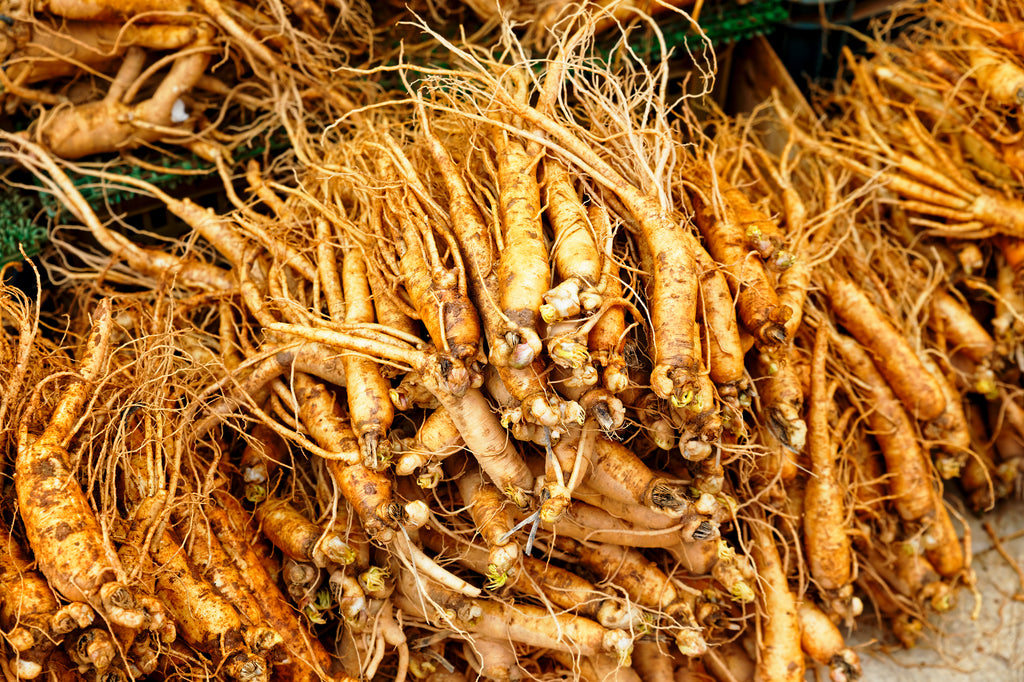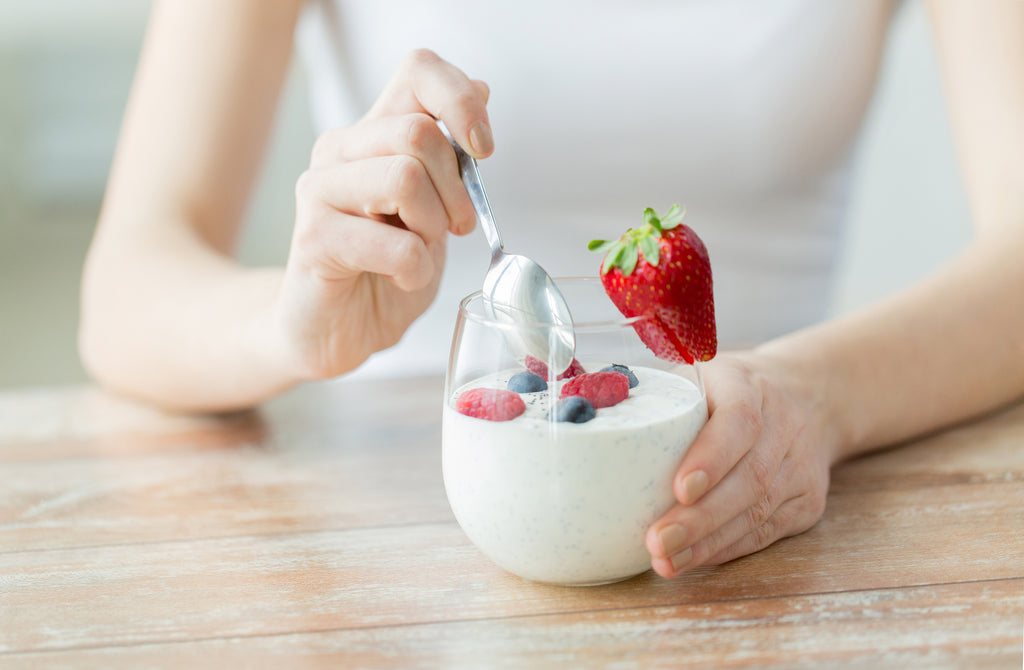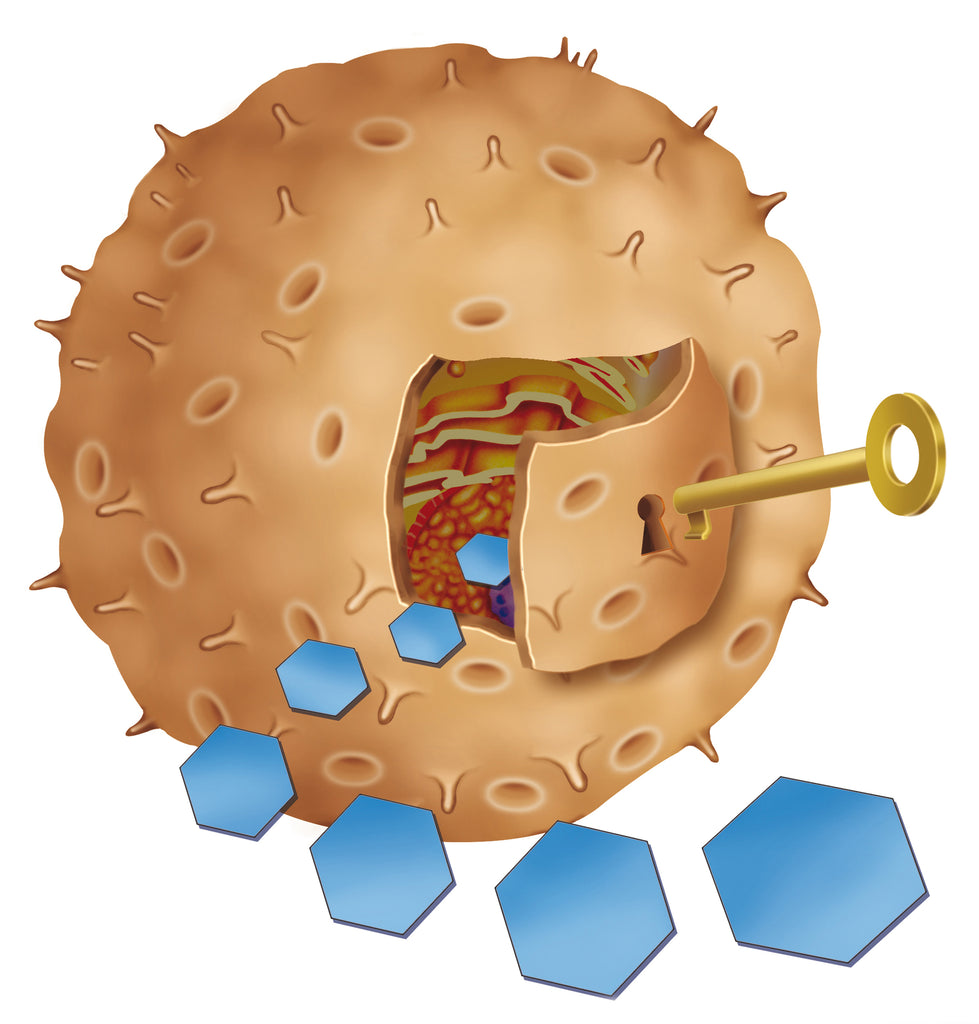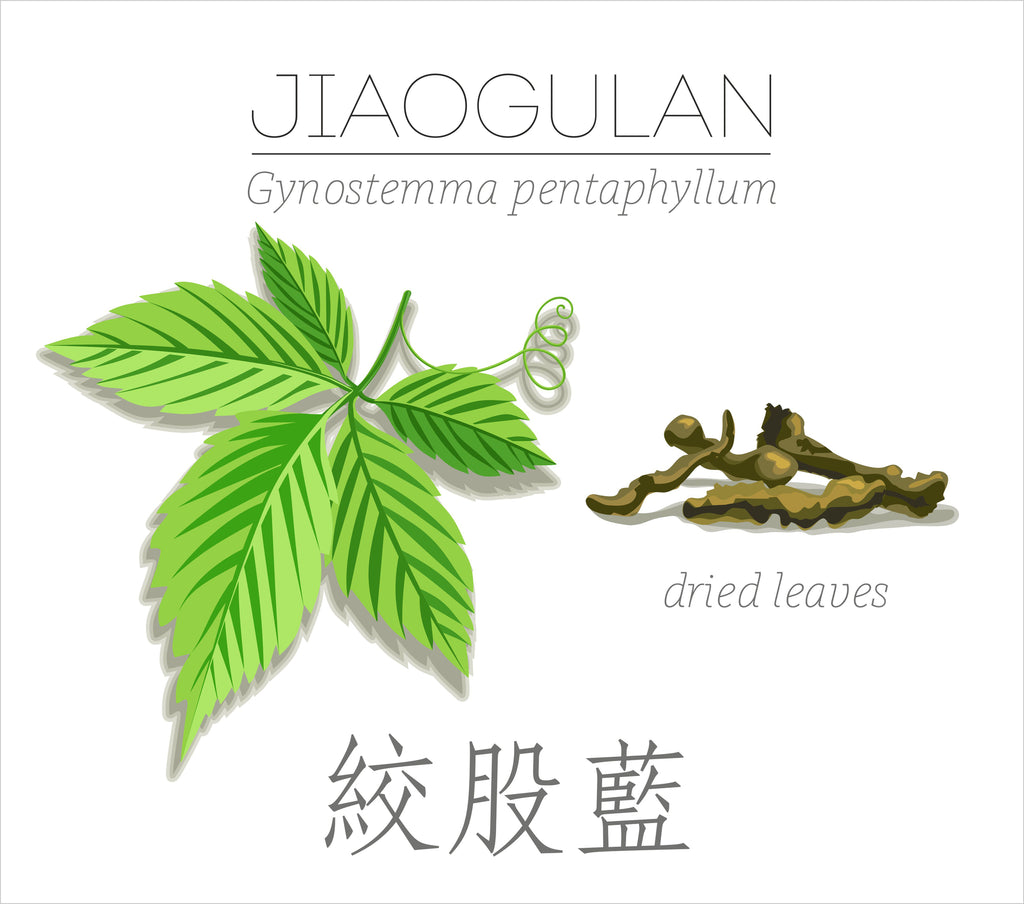8 Herbs & Supplements for Blood Sugar: Stabilize Your Mood, Fight Cravings, and Feel Healthier
Ever notice that you’re always HANGRY and craving sugar? Are you feeling sluggish and unable to focus on anything for more than… wait, what were we talking about? Cravings, mood swings, sluggishness, and trouble sleeping are signs you’re riding the blood sugar roller coaster.
These 8 herbs and supplements (#4 gives you license to eat a ton of delicious food) can bring balance to your blood sugar, helping you get to sleep faster, feel happier, live life with zest, and start getting S*** done.
Note from VitaMonk
If your whole life has been spent riding this roller coaster, you probably feel like there’s no way off. But it CAN BE DONE. We did it, and so can you.
The right diet, exercise, and the following supplements and herbs can help balance your blood sugar and have you feeling happy, focused, energetic, and fit.
This guide contains everything you need to know about the 8 most potent blood sugar-regulating substances along with info on dosage and side effects.
Let’s go...
Berberine
“I didn’t mean what I said, baby. I was hungry and had imbalanced blood sugar!” - You
If you get so hangry when you miss meals that you ruin friendships, you might want to try berberine.
You know all of those symptoms of the blood sugar roller coaster that make you want to scream out loud in the middle of a field for an hour? You feel that way because you are riding high on sugar and then crashing to the ground. Berberine helps stabilize your levels in multiple ways, and once they’re stabilized, you enjoy increased brain power, better mood, and more energy.
Even if your blood sugar levels are on the high end, you could potentially normalize them with JUST BERBERINE. It’s the ONLY supplement here scientifically proven to rival pharmaceuticals (and your money won’t go to big evil corporations) [1].
Berberine enters the bloodstream and immediately gets to work [2]:

The scientific evidence is overwhelming (Pfizer, watch out!).
- In one study, 116 diabetic patients were given 1 g of berberine per day for 3 months, and it lowered fasting blood sugar levels by 20% (from 7.0 to 5.6 mmol/L). They went from diabetic to normal with berberine alone [5].
- A meta-analysis of 14 studies concluded berberine to be as effective as oral hypoglycemics in improving glucose and lipid parameters in diabetic patients [6].
- Another meta-analysis of 27 studies concluded that berberine along with diet and lifestyle changes was more effective than just diet and exercise alone for diabetic patients [7].
Bottom line: Berberine works. High blood sugar causes fatigue, brain fog, and moodiness. It also leads to disease. Regular berberine supplementation could help you feel more focused, energetic, and healthy.
Dosage: The maximum daily intake of berberine is 2,000 mg taken in 3 doses. It’s best taken with a meal or shortly after.
Side Effects: None when taken in safe amounts, but if you take too much at once, you might have some very not-cool stomach problems that need no description.
TL;DR: Berberine is a powerful substance that has been shown to decrease insulin resistance and enhance glucose metabolism. It’s almost as powerful as some oral diabetic pharmaceuticals. It’s been proven repeatedly in-lab. Take berberine!
Cinnamon

When you have diabetes, your body either doesn’t produce enough insulin (the hormone that introduces glucose to your cells) or doesn’t react to it properly. This leaves unhealthy amounts of glucose in your blood (high blood sugar) and leads to fatigue, thirst, dizziness, and eventually, severe damage or worse. But does it have to be this way?
There isn’t a supplement that can replace insulin in your body, but there is one that imitates it and helps transport glucose to your cells: cinnamon. Yes, it’s true. Every gooey, aromatic swirl of that Cinnabon cake sends cinnamon cascading through your veins, and this comes with a number of awesome health benefits:
- Cinnamon may mimic insulin: One fascinating study showed that cinnamon was an insulin mimetic and increased glucose transport into cells [8].
More research must be done, but cinnamon's potential as a natural remedy for diabetes (at least certain symptoms) is encouraging. Cinnamon is also rich in antioxidants, so keep eating cinnastix if you want to look and feel younger, longer.
Dosage: For cinnamon extract, 250 mg twice daily. Maximum daily intake is 1,000 mg.
TL;DR: Cinnamon may mimic insulin and help transport glucose into your cells, reducing blood sugar levels and helping to reduce symptoms. It could also help you feel good about yourself even after your 3rd bowl of pasta puttanesca.
NOTE: Cinnamon comes in two varieties—Ceylon and cassia—and while both are believed to have blood sugar benefits, Ceylon cinnamon is richer in antioxidants.
Ginseng

What if we told you there was a super supplement that could make you a beast in bed, help you live every day with zeal, and turn you into Dorian Grey all while helping keep your blood sugar levels in the “normal range”?
Well, we’d probably get shut down by the FDA because that would be a lie. But Panax ginseng comes pretty damn close.
It’s highly effective for everything from supporting healthy blood flow [11] to supporting REALLY HEALTHY blood flow to a certain area of your body (just see the reference) [12].
In terms of your blood sugar, it may help keep it under control when supplemented with meals. Remember, your symptoms are due to the blood sugar roller coaster you’re on (big spikes and frightening drops in front of thousands of spoiled kids), so maintaining stability is key to feeling healthier.
In one study, 19 people were given 2 g of ginseng pre-meal (6 g per day) over 12 weeks. Ginseng may have helped keep their blood sugar under control “beyond usual therapy,” suggesting that Panax may be one of the best herbs for blood sugar and improving glucose and insulin regulation.
Another variety, American ginseng, has demonstrated remarkable abilities to increase insulin production and reduce cell death in pancreatic cells [13]. It also significantly reduced post-meal insulin levels [14].
How it works: The mechanism isn’t known yet, but there is direct evidence that ginseng promotes healthy pancreatic function (the organ that makes insulin) [15].
Dosage: Dosage in studies range from 200-400 mg (extract) to 3-8 g of Korean Red Ginseng daily.
TL;DR: Panax ginseng and American ginseng are as close as it gets to super supplements. Taking them—especially American ginseng (‘MERICA!)—pre-meal can help stabilize blood sugar levels and may even increase insulin production.
Probiotics
Good news! You can load up your shopping cart with those low-fat blueberry yogurts you love so much and not feel guilty. They contain healthy gut bacteria (probiotics) that may play a key role in metabolizing glucose in your belly.
In healthy people, the body metabolizes carbs into glucose the same way a car’s engine turns gas into motion. But, if you have diabetes, your engine can’t turn the gas into energy, zapping your system of the power it needs to move its wheels. When your car (your body) doesn’t have energy, it putts around (dizziness), burns fumes (headaches), and breaks down (fatigue).
Science says probiotics can help convert carbohydrates2 to glucose, giving you more energy….
A meta-analysis of 7 studies concluded that probiotics have a “significant impact” on fasting blood glucose and glycosylated hemoglobin, suggesting it improves glucose metabolism (especially when you consume multiple kinds for more than 8 weeks) [16].
Another study of 17 trials showed that probiotics modestly improved glycemic control by modifying your gut bacteria. Even slight improvements can provide major health benefits [17].
How to Take Probiotics

Foods rich in probiotics include:
Studies show that taking probiotics with more than one beneficial species are better for the gut. Eat. Eat. Eat.
Did you know?: Gouda cheese is from the Netherlands and is pronounced “ghow-da,” not “goo-da.” So, next time you’re in Amsterdam you’ll know how to not make a fool of yourself (at least at the cheese shop).
TL;DR: Science says you should put more microscopic parasites in your stomach to turn bread into fuel for your body.
Alpha-Lipoic Acid (ALA)
Science has proven that diabetes increases free radicals and oxidative stress and that this leads to severe complications of the heart, brain, and lower extremities [18].
ALA is a vitamin-like compound that can help fight back against this slow oxygen death and promote healthy blood glucose levels and insulin resistance.
ALA is a badass antioxidant that works like your army, navy, and nursing corps all in one. Unlike most antioxidants, it’s fat-soluble AND water-soluble (so it’s found in plants and animals) AND it helps regenerate other antioxidants like vitamins C and E [19].
What Does Science Say?
- ALA Could be an Effective Antioxidant for the Care of Diabetic Patients: Without getting into too much detail, one hypothesis states chronic elevation of glucose leads to the activation of stress pathways, insulin resistance, and impaired insulin production. It’s theorized that antioxidants may be an effective treatment for reducing the stress that activates these pathways [20].
- ALA May Increase Insulin Sensitivity and Reduce Blood Glucose: ALA may help insulin do its job better and transport more glucose to your cells. One study conducted on 50+ people showed 300 mg of ALA to reduce fasting blood glucose and increase insulin sensitivity [21]. In another study where participants supplemented either 300, 600, 900, or 1,200 mg of ALA, fasting blood glucose was significantly reduced, as was HbA1C (average blood sugar over the past few months) [22].
Dosage: Your body makes ALA, but supplementing is far more potent. Recommended intake is between 600 mg and 1200 mg. Some studies noted that the effects increased as the dosage increased.
TL;DR: Stop being beta and start being ALPHA. ALA is a powerful antioxidant that could also increase insulin sensitivity and promote healthy blood sugar levels.
Chromium
“Essentially all the studies using chromium picolinate supplementation for impaired glucose intolerance and diabetes showed a positive effect.” - Richard Anderson, of the US Department of Agriculture
You may think of your body as an efficient machine hellbent on its own success and preservation, but in reality, it’s actually sensitive… sensitive to the powers of insulin.
Elevated blood glucose levels trigger your pancreas to secrete insulin, and your overly sensitive body bends to its will and does whatever insulin says (please, insulin. May I have another?)
That is, unless you have diabetes. Then your body is impervious and insensitive to insulin’s puny attempts to shovel fuel from your blood to your cells.
Chromium, a vital mineral responsible for glucose metabolism and insulin sensitivity [23], may be the therapy your body needs to discover its sensitive side again.
Can chromium make you more sensitive (to insulin)?

Chromium won’t stop you from needing medical treatment from diabetes. But, studies pertaining to its efficacy as an adjunct treatment are encouraging.
In a study of 78 people, chromium helped control blood glucose [24]. Another study found that 200 micrograms of chromium in milk powder helped reduce blood glucose and improve the body’s sensitivity to insulin [25].
All in all, chromium won’t make you cry about a minor confrontation at work (I WANTED PF CHANGS FOR LUNCH, THAT’S ALL!), but it could make your body slightly more sensitive to insulin and help regulate blood sugar levels. It’s definitely worth adding to your supplement regimen!
Dosage: The optimal dose is 20 mcg per day, but doses up to 1,000 mcg have proven effective.
TL;DR: Chromium is a powerful mineral responsible for glucose metabolism in the body. Supplementing chromium at about 200 mcg per day has produced encouraging scientific results, including improving the body’s sensitivity to insulin. HINT: That’s good for blood sugar levels.
Vanadium

Sometimes, diet and exercise are enough to balance blood sugar. Other times, you need to channel the power of the Ancient Norse god Vanadis (also known as Freyja), the goddess of sex, beauty, war, death, love, and fertility.
Vanadium, named after Vanadis due to its beautiful colors, may restore elevated blood glucose levels to normal [26]. It’s a mineral found mostly in bone tissue, but thankfully, you don’t have to go all goddess of death and break some bones to get the benefits.
In one study, between 50-100 mg of vanadium managed to reduce fasting blood glucose in patients with type-1 diabetes [27].
In another study on insulin sensitivity, 100 mg of vanadium was put up against 100 mg of a placebo for 3 weeks. Guess who won? Vanadyl sulfate increased insulin sensitivity and the effects were sustained for 2 more weeks after the study concluded.
Dosage: Most studies used 100 mg of vanadium per day. That’s a good place to start.
TL;DR: Vanadium deserves to be in your stack simply because of its name. It’s also good for insulin sensitivity.
BONUS - Gynostemma Pentaphyllum (Jiaogulan extract): Is it the Anti-Diabetic Panax?

Gynostemma Pentaphyllum (Jiaogulan extract) is an herb long famous in China as an “immortality” herb. Close your eyes and imagine emerging from a Chinese mountain pass…
Your eyes are greeted by streams and fertile soil of a windswept valley. Snow capped mountains serve as the backdrop for swaths of trees whose vines offer immortality, virility, and anti-diabetic benefits.
OK, this is clearly propaganda from VisitChina.org, so let’s stick to hard science. There’s actually plenty of it for jiaogulan extract!
Southern ginseng or “cheap ginseng” (hey, we’re trying to help blood sugar levels not spend money!) contains ginsenosides, or steroid-like saponins. They’re wholly unique to ginseng and come with some huge benefits for your blood sugar levels.
In one study cited by the American Diabetes Association, “cheap ginseng” improved both blood glucose levels and insulin sensitivity in diabetics [26]. In another study, 6 g daily for 8 weeks reduced fasting blood glucose and HbA1C [27].
Dosage: Feel free to make tea using 6 g of dry leaves. Since Panax and its “cheaper” cousin are so similar, an educated guess is to stick with Panax-level doses (100-500 mg).
TL;DR: Jiaogulan extract won’t make you immortal, but it does contain steroidal-saponins that may help promote healthy insulin sensitivity and reduce blood glucose. #DoYouEvenJiaogulan?
Controlling Your Blood Sugar is POSSIBLE if You Optimize Your Life

Getting your blood sugar under control doesn’t have to be hard. There are a ton of herbs and supplements with proven abilities to reduce blood glucose, improve insulin sensitivity, and help you remain healthy, energetic, and focused throughout the day.
Actually, there are so many that it could be a problem. How can you realistically drink enough tea, take enough supplements, destroy enough Cinnabons (OK, that’s easy actually), and get away with politely asking for an extra side of kimchi to get all of the blood-sugar-regulating goodness you need to stop being so hangry?
You probably can’t… unless there was some blood-sugar regulating cocktail full of the optimal levels of some of the best herbs and supplements for blood sugar…
VitaMonk’s Blood-Sugar Cocktail
This one capsule contains all of the potent ingredients in their optimal doses to help keep your blood sugar levels stable and promote energy, focus, and a positive mood throughout the day.
Just one serving thrice daily with food is all you need to fight HANGER, maintain friendships with those closest to you, and stop passing out after breadsticks with a side of pasta. No fillers, no additives, no artificial anything. Just pure, unadulterated goodness.
Imagine how much easier your life would be if you didn’t have to take 10 different supplements at once in different forms. Just one capsule gives you:
- Berberine - 200 mg
- Chromium Polynicotinate - 200 mcg
- Vanadium (as Bis-glycinato-oxovanadium) - 200 mcg
- Jiaogulan Extract (Gynostemma pentaphyllum) (Root and rhizome) (Contains 98% Gypenosides) - 100 mg
- Kingsun® Rock Lotus Extract (Sinocrassula indica) (Leaf) - 100 mg
- Glycostat® Wild Bitter Melon Extract (Momordica charantia) (Fruit) -100 mg
- Banaba Leaf Extract (Lagerstroemia speciosa) (Leaf) (Contains 2% Corosolic Acid) - 100 mg
- Cyanidin 3-Glucoside - 100 mg
We've not launched this to the public yet, but if you're interested - let us know and we'll put you on the waiting list.
References
[1] https://www.ncbi.nlm.nih.gov/pubmed/23118793
[2] https://www.ncbi.nlm.nih.gov/pubmed/25861268
[3] https://www.ncbi.nlm.nih.gov/pubmed/17971514
[4] https://www.ncbi.nlm.nih.gov/pmc/articles/PMC3033390/
[5] https://www.ncbi.nlm.nih.gov/pubmed/18397984
[6] https://www.ncbi.nlm.nih.gov/pubmed/23118793
[7] https://www.ncbi.nlm.nih.gov/pubmed/25498346
[8] https://www.ncbi.nlm.nih.gov/pubmed/11506060
[9] https://www.ncbi.nlm.nih.gov/pubmed/17924872
[10] https://www.ncbi.nlm.nih.gov/pubmed/21711570
[11] https://www.ncbi.nlm.nih.gov/pubmed/20134405
[12] https://www.ncbi.nlm.nih.gov/pubmed/12394711
[13] https://www.ncbi.nlm.nih.gov/pmc/articles/PMC2781779/
[14] https://www.ncbi.nlm.nih.gov/pubmed/29478187
[15] https://www.ncbi.nlm.nih.gov/pmc/articles/PMC4991827/
[16] https://www.ncbi.nlm.nih.gov/pubmed/26987497
[17] https://www.ncbi.nlm.nih.gov/pmc/articles/PMC4498615/
[18] https://www.ncbi.nlm.nih.gov/pmc/articles/PMC2996922/
[19] https://www.ncbi.nlm.nih.gov/pmc/articles/PMC3221300/
[20] https://www.ncbi.nlm.nih.gov/pubmed/12372842
[21] https://www.ncbi.nlm.nih.gov/pubmed/21666939
[22] https://www.ncbi.nlm.nih.gov/pubmed/22374556
[23] https://www.ncbi.nlm.nih.gov/pubmed/15208835
[24] https://www.ncbi.nlm.nih.gov/pubmed/11376359
[25] https://www.ncbi.nlm.nih.gov/pubmed/16784965
[26] https://www.ncbi.nlm.nih.gov/pubmed/9823013
[27] https://www.ncbi.nlm.nih.gov/pubmed/23808778
[28] https://professional.diabetes.org/abstract/major-anti-diabetic-effect-gynostemma-pentaphyllum-tea-patients-type-2-diabetes
[29] https://www.ncbi.nlm.nih.gov/pubmed/23125867